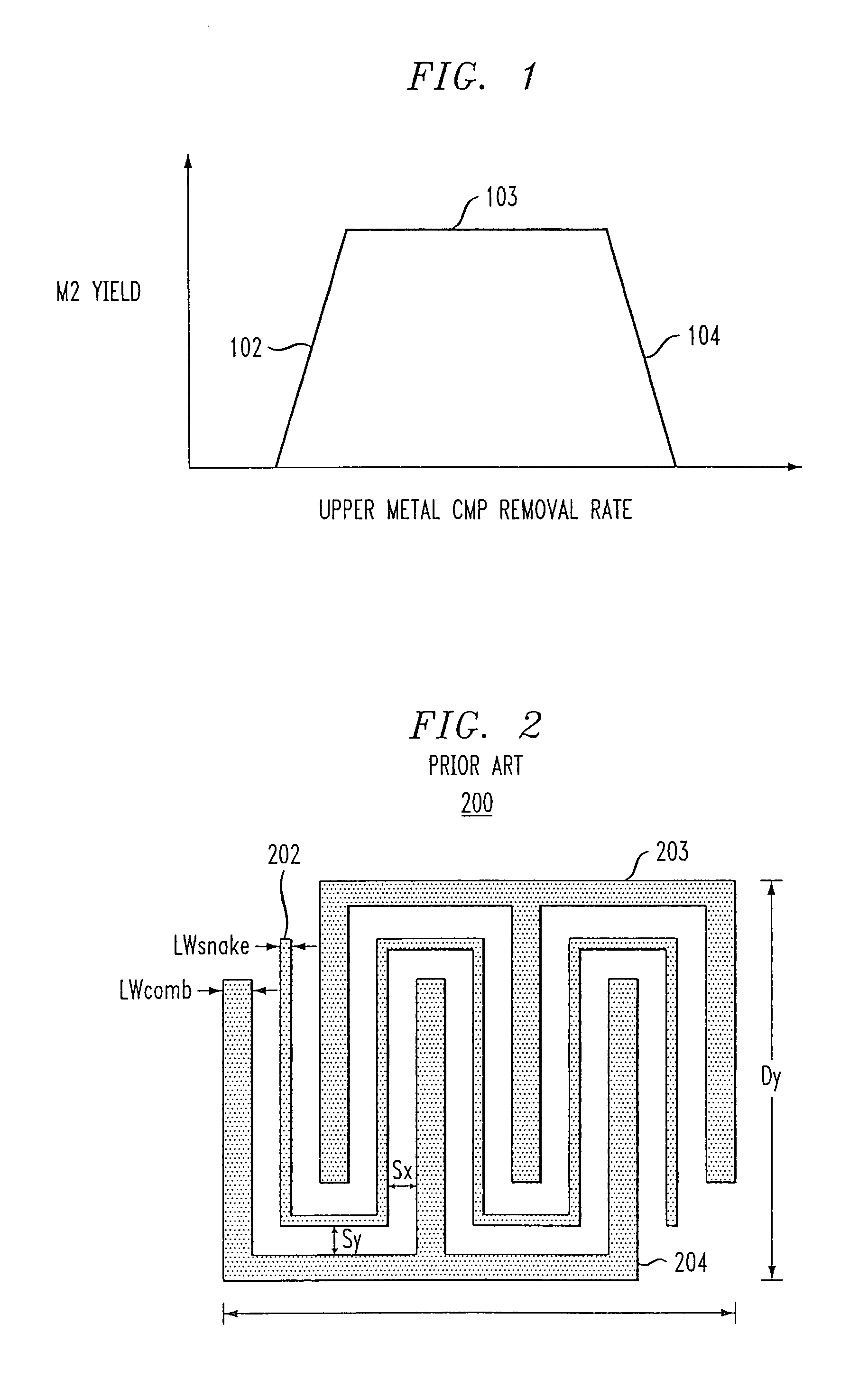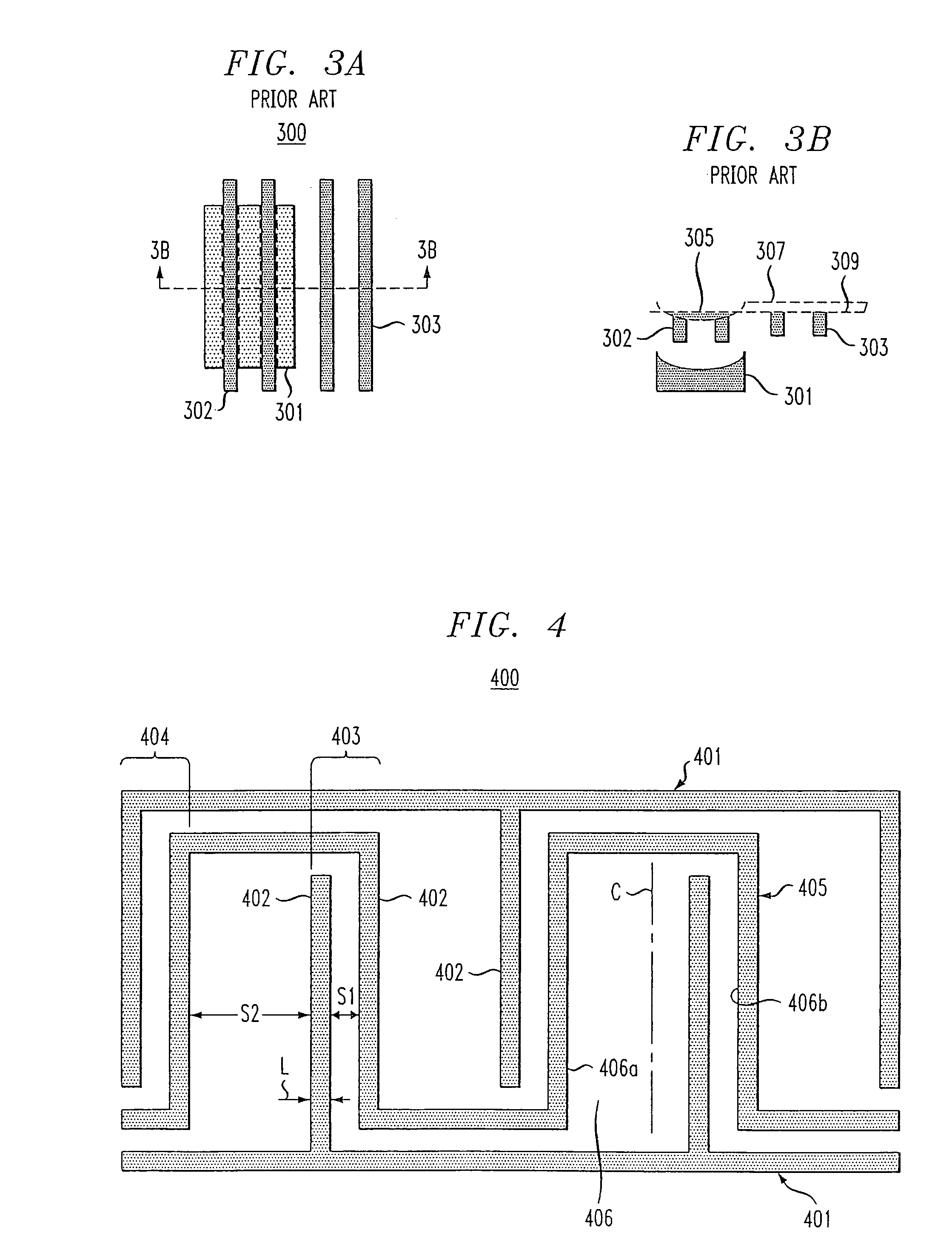Test structures and models for estimating the yield impact of dishing and/or voids
a technology of test structures and models, applied in individual semiconductor device testing, semiconductor/solid-state device testing/measurement, instruments, etc., can solve problems such as malfunction of affected chips, electricly measurable faults (killer defects), and particularly significant topography-related defects
- Summary
- Abstract
- Description
- Claims
- Application Information
AI Technical Summary
Benefits of technology
Problems solved by technology
Method used
Image
Examples
Embodiment Construction
[0027]U.S. Provisional Patent Application No. 60 / 316,317, filed Aug. 31, 2001, is incorporated by reference herein in its entirety.
[0028]Introduction
[0029]Cu (or other material) dishing on lower metal layers is known to cause residual barrier metal material on the next metal layer resulting in electrical shorts. Oxide dishing and metal void formation in the lower metal layers have also been observed to lead to electrical shorts in upper metal layers. The probability of these types of failure depends on several factors:[0030]1. the probability of Cu (or other metal) dishing, oxide dishing or Cu (or other metal) voiding in the lower metal layer[0031]2. the probability of transfer of lower layer topography into upper layer oxide topography
[0032]3. the removal rate during the final polishing step during upper metal layer formation
[0033]4. the presence of upper layer metal in close enough proximity to the residual material defect to result in a short in the upper layer metal.
[0034]Prior ...
PUM
 Login to View More
Login to View More Abstract
Description
Claims
Application Information
 Login to View More
Login to View More - R&D
- Intellectual Property
- Life Sciences
- Materials
- Tech Scout
- Unparalleled Data Quality
- Higher Quality Content
- 60% Fewer Hallucinations
Browse by: Latest US Patents, China's latest patents, Technical Efficacy Thesaurus, Application Domain, Technology Topic, Popular Technical Reports.
© 2025 PatSnap. All rights reserved.Legal|Privacy policy|Modern Slavery Act Transparency Statement|Sitemap|About US| Contact US: help@patsnap.com



